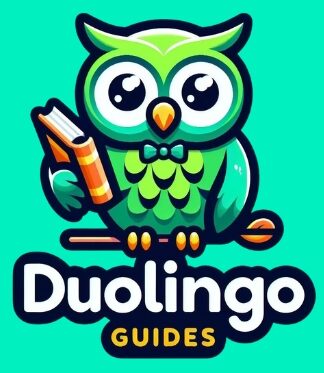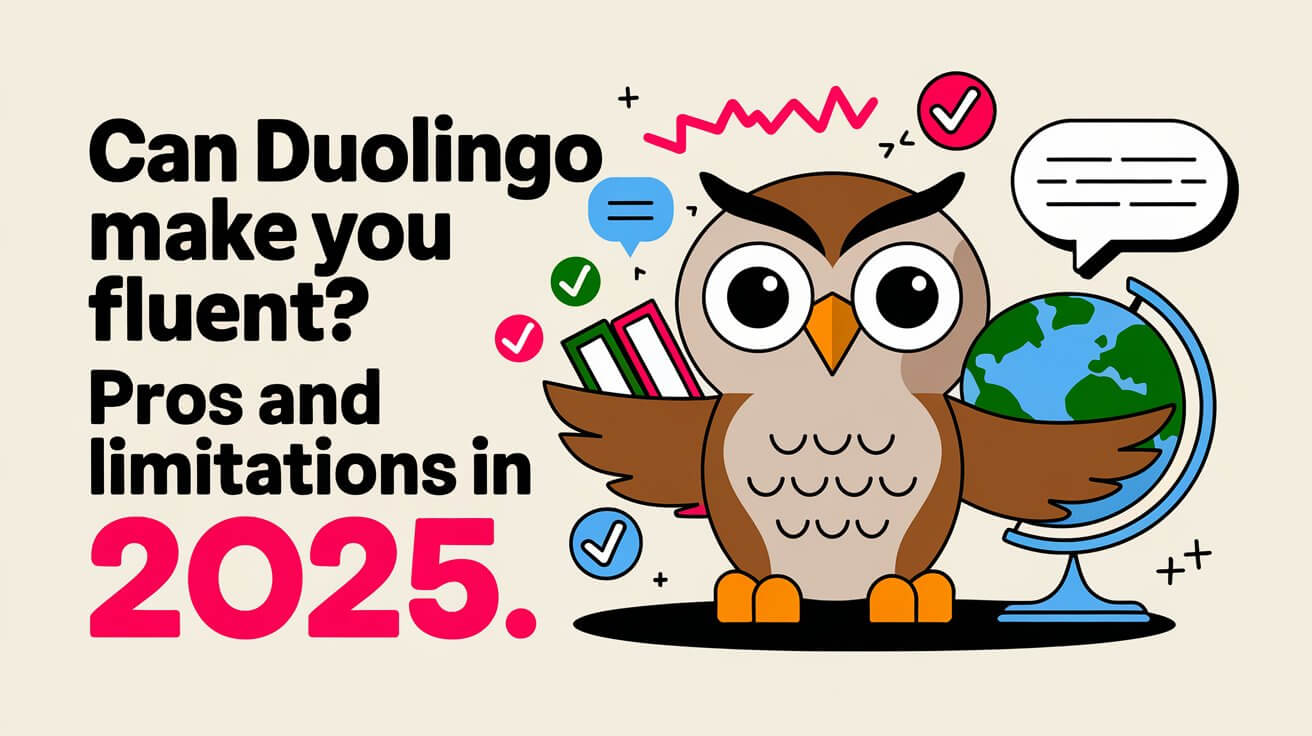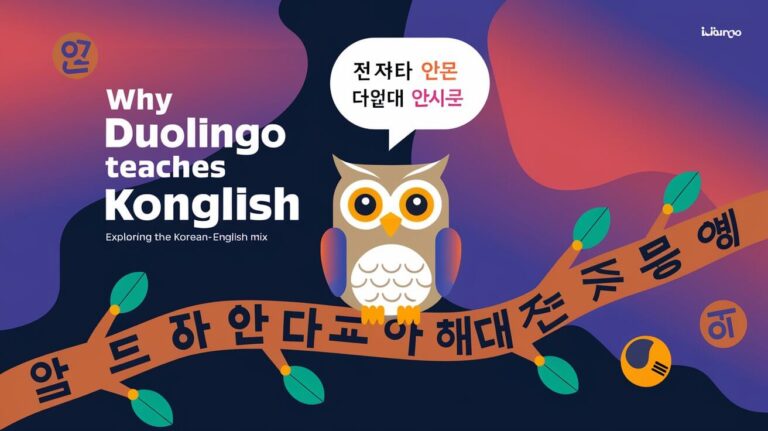Duolingo is a well-known app for learning languages. It offers many languages, including rare ones like Gaelic in Scotland. It aims to make users fluent in these languages.
The app uses fun and interactive ways to teach. It covers reading, writing, listening, and speaking. These skills are key to becoming fluent.
For those wanting to get better at a language, Duolingo is a great tool. It helps users learn to speak and understand a new language well. With Duolingo, you can start with simple phrases and words.
Eventually, you might learn 1200 to 1500 words. This is like reaching an A2 level in language skills. It’s a big step towards fluency.
Reality of Language Fluency Through Apps
Language fluency is more than just learning words and rules. It includes grammar, vocabulary, how to speak, and knowing the culture. Apps like Duolingo can help with these basics. But, becoming truly fluent in a language takes more than just using an app.
Apps often track your progress with things like streaks and points. But, these don’t always show how well you really speak. To truly get fluent, you need to talk to people, listen well, and understand the culture. Here are some things apps might not cover well:
- Grammar and vocabulary usage in context
- Pronunciation and intonation
- Cultural awareness and nuances
- Real-life conversation and dialogue
Even with their limits, apps like Duolingo are great for learning a language. They offer a clear plan and ways to track your progress. By using apps and practicing in real life, you can get closer to true fluency.
| Language Level | CEFR Description | Duolingo Goal |
|---|---|---|
| A1-A2 (Beginner) | Basic language skills | Foundational courses |
| B1-B2 (Intermediate) | Independent language use | Structured courses and practice |
| C1-C2 (Advanced) | Proficient language use | Advanced courses and real-life application |
Language Skills Duolingo Actually Builds
Duolingo is a well-known app for learning languages. It uses fun exercises and games to teach reading, writing, listening, and speaking. This approach makes learning a language practical and relevant to everyday life.
Here are some key skills Duolingo helps you develop:
- Reading proficiency: Duolingo Spanish learners often do better than college students in reading.
- Listening proficiency: Duolingo French learners also outperform college students in listening.
- Speaking skills: After finishing five units, you can reach A1/A2 levels and start B1 materials.
- Writing skills: Duolingo’s writing exercises are basic but help lay the groundwork for better writing.
While Duolingo is great for learning languages, it has its limits. The content might not be enough for advanced or mastery levels. Yet, with regular practice, you can keep a streak of over 500 days and see big improvements in your skills.
| Language Course | Number of Sections | Number of Units |
|---|---|---|
| Duolingo Spanish | 8 | over 200 |
| Duolingo Turkish | 3 | 35 |
Scientific Research Behind Duolingo’s Method
Duolingo uses science to make learning languages fun and effective. It uses spaced repetition, gamification, and neural networks to help you learn. This way, Duolingo makes learning a language more enjoyable and successful.
Spaced Repetition System
The spaced repetition system is a big part of Duolingo. It helps you remember what you’ve learned for a long time. By reviewing material at longer intervals, you get to practice and strengthen your language skills.
Benefits of Gamification
Gamification is key in Duolingo’s method. It makes learning fun by using rewards and challenges. This keeps you motivated and interested in learning, helping you do better and feel more satisfied.
Neural Network Adaptations
Duolingo uses neural networks to tailor learning to you. It looks at how you learn and what you need help with. Then, it gives you feedback and tips to improve your skills.
Here are some stats that show Duolingo works well:
- A study found a link between how much you think you’ve learned and actual learning, at 0.34.
- How motivated you are to learn is linked to how much you think you’ve learned, at 0.59.
- Duolingo’s rewards system increased user referrals by 116%.
| Language | Number of Users | Monthly Active Users |
|---|---|---|
| Spanish | 100 million | 20 million |
| French | 50 million | 10 million |
| Chinese | 20 million | 5 million |
Time Investment and Progress Correlation
Language learning needs a lot of time to get good. Regular practice and review help a lot. Duolingo’s app makes learning easy with daily goals and streaks.
How much time you put in matters a lot. Spending 15 minutes a day on Duolingo can really help. The app shows your progress with XP scores, from A1 to C2.
Here are some key milestones in language learning:
- Basic conversation skills can be reached with approximately 1,000 to 5,000 XP, depending on the language.
- Intermediate level mastery requires about 10,000 to 50,000 XP.
- Advanced proficiency can involve XP exceeding 100,000.
Putting in time and effort can really pay off. Duolingo helps you track your progress and stay motivated. It makes learning a language fun and rewarding.
Real User Success Stories and Statistics
Many users have reached their language learning goals with Duolingo. They’ve seen big improvements in reading, writing, listening, and speaking. Success stories and stats show Duolingo’s power in language learning, helping users become fluent and proficient in many languages.
For instance, Tommy Thompson has been learning Spanish for 3.5 years with Duolingo. Corniesha Johnson has been learning Spanish for 4 years. Peter Shields has been learning French for 4 years, and Jennifer Tsan studied French for 5 years, finishing the course in 5 weeks. These stories and stats prove Duolingo’s effectiveness in language learning.
Beginner to Intermediate Transitions
Going from beginner to intermediate is a key step in learning a language. Duolingo’s interactive lessons and exercises help users build a strong foundation. They also gain confidence to communicate well.
Advanced Level Achievements
Reaching advanced levels and getting professional certifications show Duolingo’s ability to offer a full language learning experience. It has specialized courses and career training to help users reach their goals.
| User | Language | Time Spent Learning |
|---|---|---|
| Tommy Thompson | Spanish | 3.5 years |
| Corniesha Johnson | Spanish | 4 years |
| Peter Shields | French | 4 years |
| Jennifer Tsan | French | 5 years |
Supplementary Tools for Complete Fluency
Duolingo is great for learning a new language, but sometimes you need more. That’s where extra tools come in. They help you get better at speaking and understanding a language. Things like language exchange, tutoring, and living in a new country are great for this.
Using these tools has many benefits. For example, you get to practice speaking and listening. You also learn new words and grammar in fun ways.
Practicing every day and using these tools, you can get really good at a language. With Duolingo and these tools, you can become fluent in about 8 months. This is if you practice every day and really focus on learning.
Common Misconceptions About Duolingo
There are many misconceptions about Duolingo that can affect its use. One big one is thinking it’s a fast way to learn a language. But, learning a language takes time and effort.
Another common belief is that Duolingo can replace talking to real people. While it has fun exercises, it can’t replace the personal touch needed for language skills. People using Duolingo often find it hard to speak fluently because it relies on translation, which is slow.
Here are some common misconceptions about Duolingo:
- Duolingo is a quick-fix solution for language learning
- Duolingo can replace human interaction and feedback
- Duolingo is enough to achieve fluency in a language
Duolingo is just one tool for learning a language. It helps with basic conversations but doesn’t make you fluent. Knowing these misconceptions helps set realistic goals and use Duolingo well in your learning journey.
| Misconception | Reality |
|---|---|
| Duolingo is a quick-fix solution | Language learning requires consistent practice and dedication |
| Duolingo can replace human interaction | Human interaction and feedback are essential for language learning |
| Duolingo is enough to achieve fluency | Duolingo is just one tool that can be used as part of a comprehensive language learning strategy |
Realistic Fluency Goals with Duolingo
To get fluent with Duolingo, setting realistic goals is key. You need to know what the app can do and what it can’t. Also, think about how you learn best and what you need. With a good plan and goals, you can use Duolingo’s tools well and learn faster.
When setting goals with Duolingo, keep these points in mind:
- Practice regularly and review often
- Focus on what you need and how you learn best
- Use Duolingo’s tools like spaced repetition and skill strengthening
Using Duolingo smartly and setting the right goals, you can get fluent. Duolingo has over 45 languages, from common ones like Spanish and French to less known ones. It’s great for both newbies and those who already know a bit of a language. Duolingo can help you meet your fluency goals and boost your language skills.
| Language Level | Typical Duration | Proficiency Milestones |
|---|---|---|
| A1 (Beginner) | 1-2 months | Understand and use familiar everyday expressions and simple sentences |
| A2 (Elementary) | 3-6 months | Understand sentences related to personal information and express basic ideas |
| B1 (Intermediate) | 6-9 months | Handle complicated situations and speak about hobbies and emotions |
| B2 (Upper Intermediate) | 9-12 months | Communicate fluently and handle complex texts and conversations with native speakers |
Bottom Line
Duolingo is a great tool for learning languages, but it’s just the start. Knowing what it can and can’t do helps set better goals. This way, you can use it with other learning methods to get really good at a new language.
The app’s fun features and smart learning help with words, grammar, and sentences. But, remember, Duolingo alone won’t make you talk like a native. To get really good, you need to practice speaking, learn about the culture, and see more advanced language in use.
Using Duolingo well and setting smart goals can help you reach your language dreams. It’s a great tool for beginners and those getting better, but it’s just one part of learning a language. A complete approach is key to mastering a new tongue.







